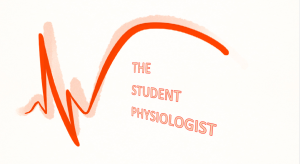by Robin Dale
A cardiology fellowship will give you the opportunity to be fully prepared for the field and can go as long as four years. It will help you to hone your clinical skills and have cutting edge skills in surgery. A mix of research, public lectures, clinical experience, and classroom-based learning all combined enable one to be very well versed in the field at hand. Fellowships in Cardiology range from Cardiac Surgery Training, Cardiac Critical Care and Paediatric Cardiology, Vascular and Interventional Radiology, and Vascular Surgery and Endovascular Therapy Fellowships.
Several institutions offer what are considered the best Cardiology Fellowship Programs. To choose and get accepted into the best cardiology fellowships programs successfully, requires much more than an exceptional personal statement; applying to a residency, especially a cardiology one, is challenging and requires a lot of work. The existing places for such mentorships are extremely limited and contested, so you have an obligation to be unique and to stand out in order to be accepted.
Your cardiology fellowship personal statement is an opportunity whereby you can say why you feel you are the most deserving of being enrolled in the program. Elevating yourself above the bar will determine whether you are accepted or rejected. Here you will find the help to writing a personal statement for fellowship in cardiology, as well as some dos and don’ts.
Fellowship goes above and beyond a good resume. A good resume can only go a long way. You can be the most qualified and have the best CV, but this will not guarantee you a spot in the fellowship program. As a candidate, do research on your options, enhance your exposure on volunteer work, conduct clinical research projects, and get publications. Ensure that you have filled the gaps in your resume and took the time to address all of them practically. Most candidates limit their options depending on where the hospitals are situated. This approach is detrimental, however, and prevents them from having a varied list and therefore options pertaining to the top-notch institutions. As a candidate, you can polish up your resume with a clearly defined and well put together personal statement.
The AMA or the American College of Physicians. Most candidates are not part of any corporate entity that advocates for their medical practice. With the continuous cutting of funds in the national budget, it is getting harder and harder to provide any services. This, in turn, has reduced the number of applicants able to be accepted and therefore numerous candidates find themselves being turned down. Joining the AMA will help you get a fair trial and increase your chances of getting approved.
Application to highly competent residency. Programs in radiology, dermatology and cardiology are highly competitive, and the stakes are high. Some of these students’ performances in their former medical school are usually not up to standard and sometimes place few schools on their ranking list.
Expansion of classification list. Students tend to limit their options and apply to a few residency programs. However, it is encouraged that a student lists down at least five hospitals to increase their chances of getting accepted. These choices can either be within their chosen specialty or even selecting a different specialty.
Transitional slot. A student can contact their medical school and ask for an interim slot or see a research fellowship. With this, the candidate will be able to become more competitive in the field and increase their chances of approval. An additional degree is also a supplement to a candidate’s resume and consideration.
Ill-preparedness. Two or more years of postdoctoral training whereby there is formal coursework in the fundamental sciences pertinent to the investigator’s area of expertise; this increased chances of attaining a fellowship.
Medical residency interview. It’s like a pass mark for all residents. Most programs won’t absorb candidates they have not interviewed. It is crucial that you take this interview seriously as it will not only determine if you will get accepted but also where you will get accepted.

Robin Dale is a junior doctor and her passion is guest post writing. She is fond of writing useful posts for students to make their learning lives easier and more effective. Her own life credo is “Keep calm, study hard, and become a doctor”.








